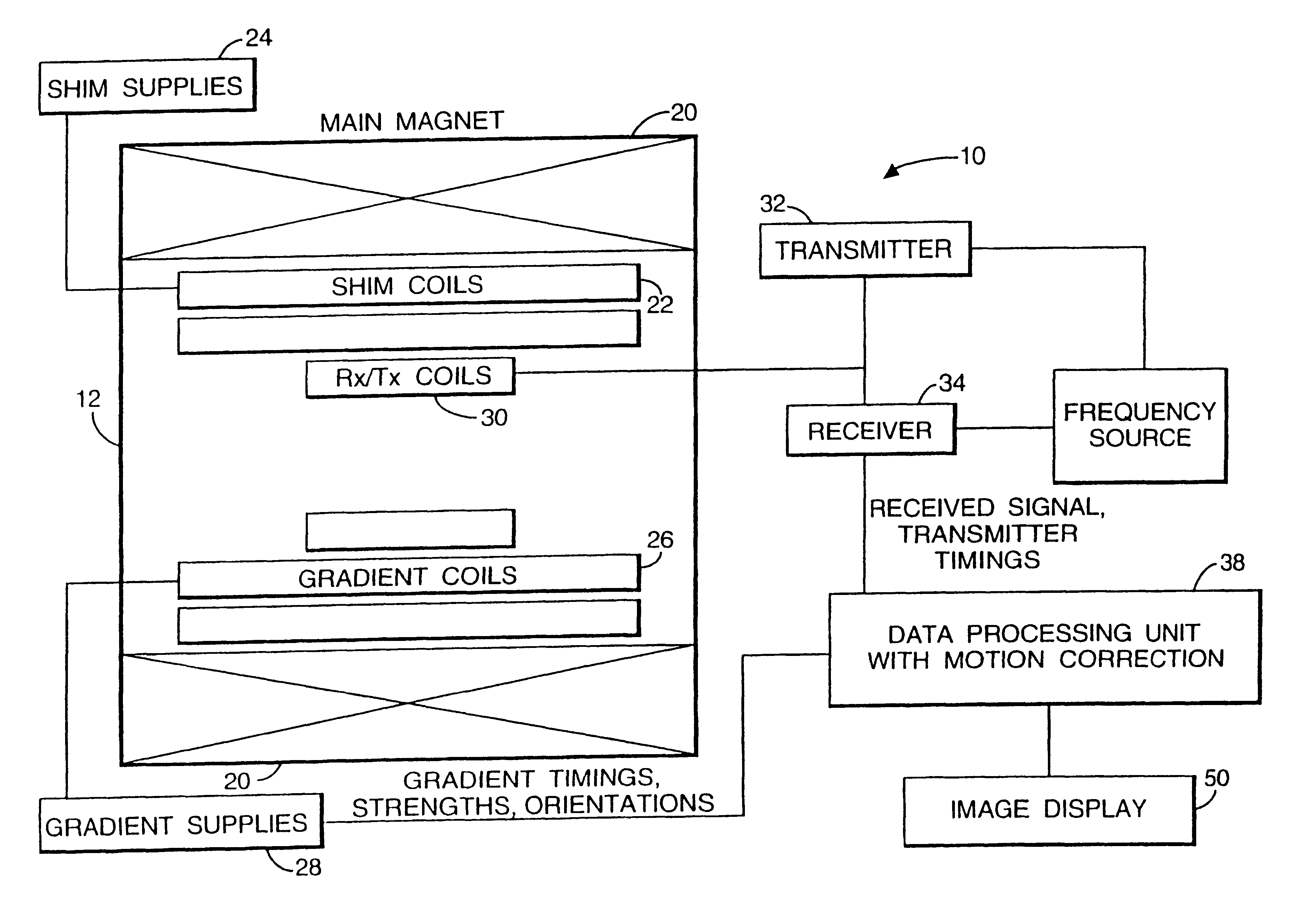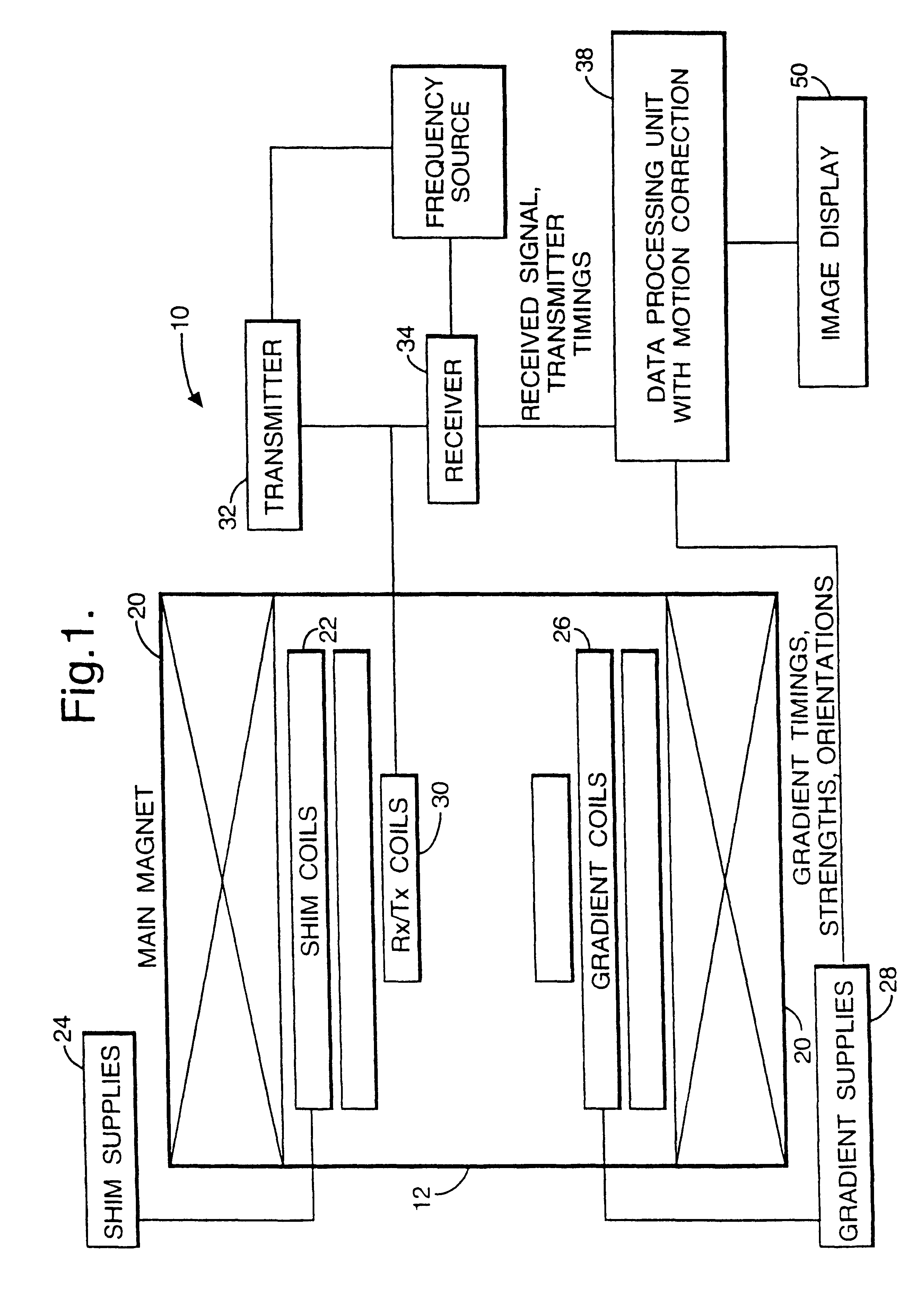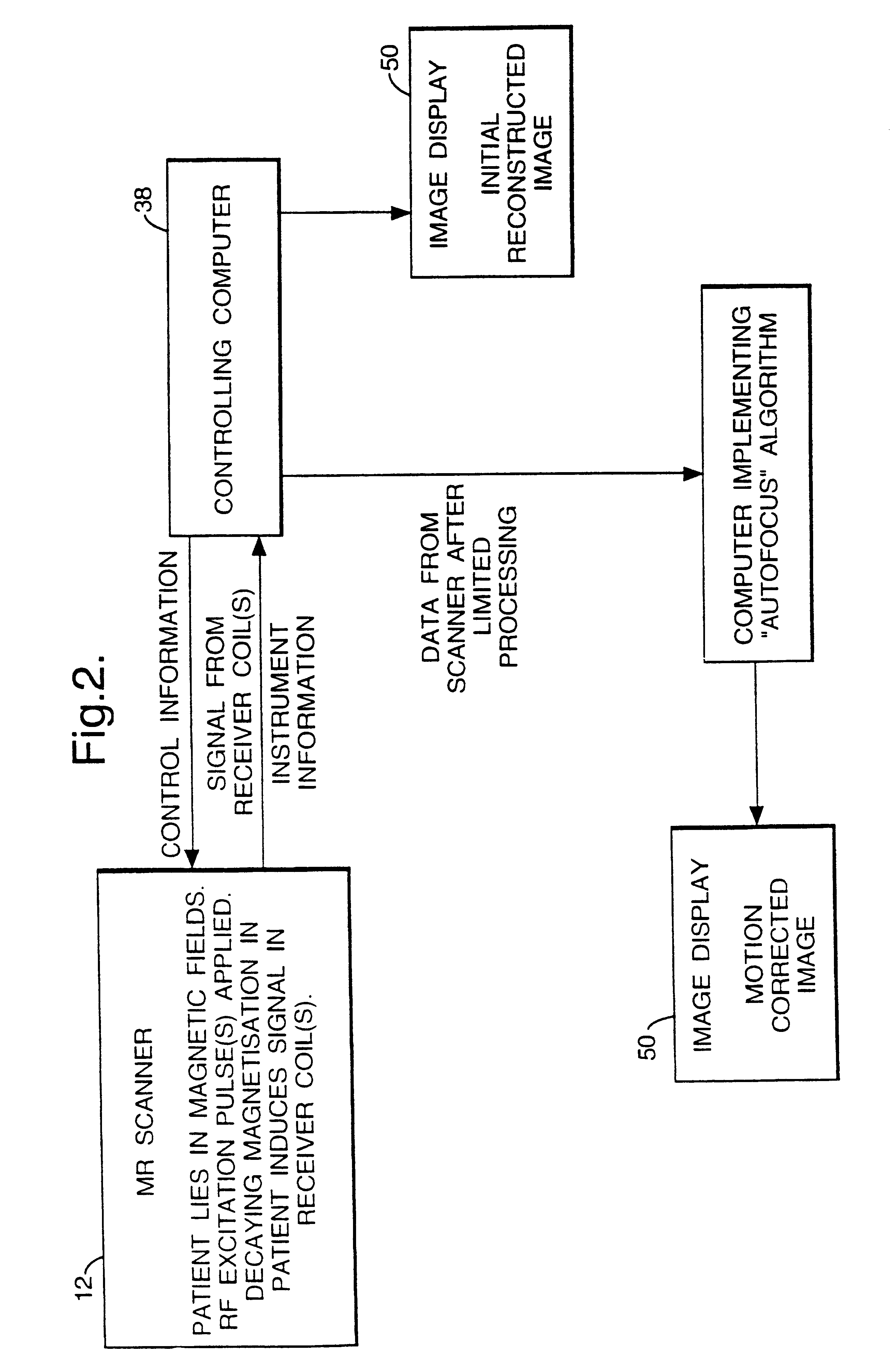Method and apparatus for imaging artefact reduction
a technology of artefact reduction and imaging, applied in the field of image processing, can solve the problems of phase shift that is a more complicated function, significant compromise of spatial resolution and image quality, and degradation of images that can obscur
- Summary
- Abstract
- Description
- Claims
- Application Information
AI Technical Summary
Benefits of technology
Problems solved by technology
Method used
Image
Examples
Embodiment Construction
Referring to FIG. 1 there is shown a schematic diagram of a magnetic resonance imaging system 10. The system 10 incorporates a magnetic resonance imaging scanner 12 of conventional type. The scanner 12 has a superconducting main magnet 20 which generates a magnetic field sufficiently strong to cause a net alignment along the field direction of atomic nuclei within a patient. The scanner 12 also includes shim coils 22 in order to correct for undesired inhomogeneities in the magnetic field of the main magnet 20. The magnetic field produced by the shim coils 22 is controlled by a shim coil power supply unit 24.
The resonance frequency of particular atomic nuclei is characteristic of the nucleus and the strength of the applied magnetic field. In order to provide spatial information, a magnetic field gradient is generated by gradient coils such as coils 26. Gradient coils are often arranged to generate gradient fields in three orthogonal directions. The magnetic fields generated by the gr...
PUM
 Login to View More
Login to View More Abstract
Description
Claims
Application Information
 Login to View More
Login to View More - R&D
- Intellectual Property
- Life Sciences
- Materials
- Tech Scout
- Unparalleled Data Quality
- Higher Quality Content
- 60% Fewer Hallucinations
Browse by: Latest US Patents, China's latest patents, Technical Efficacy Thesaurus, Application Domain, Technology Topic, Popular Technical Reports.
© 2025 PatSnap. All rights reserved.Legal|Privacy policy|Modern Slavery Act Transparency Statement|Sitemap|About US| Contact US: help@patsnap.com



